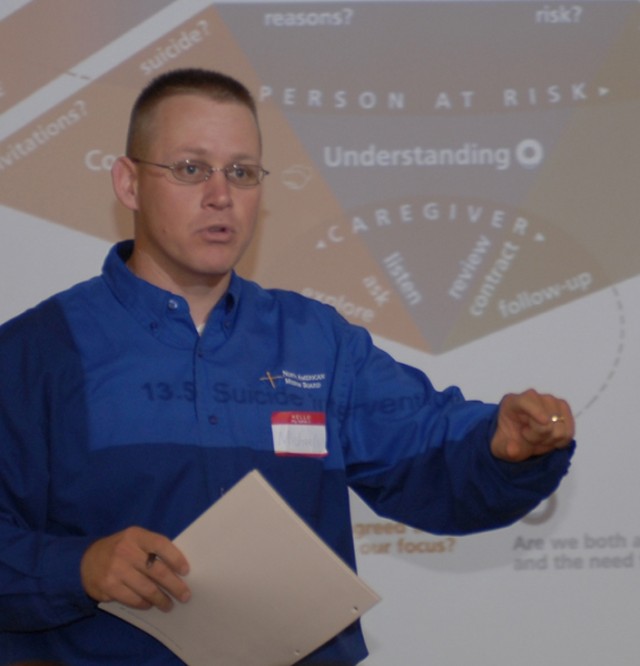
FORT HOOD, Texas - What can a Soldier do to intervene and help someone who is contemplating suicide'
Soldiers from the 1st Air Cavalry Brigade, 1st Cavalry Division took part in applied suicide intervention skills training (ASIST) here, Nov. 16-17, with the intent of finding the answer to that specific question.
"The ASIST program is about human connections and that is what we are trying to accomplish with this training," said Chaplain (Capt.) Michael Dawson, the battalion chaplain for the 1st Attack Reconnaissance Battalion, 227th Aviation Regiment, 1st ACB, originally from Rome, Ga. "It's about giving caring human beings the tools to perform 'suicide first aid' on those individuals who are at risk."
While previous Army training focused more on suicide prevention, ASIST focuses more
on intervention and how to ultimately prevent someone from taking his or her own life, said Dawson.
The Soldiers involved in the training ranged from brand new privates to seasoned chief warrant officers. The idea was to have a vast array of personnel with Soldiers in leadership positions to those in the junior ranks, recognizing that Soldiers from all spectrums of the command should have the skills needed to intervene when necessary.
Conducted in an informal setting at the brigade headquarters classroom, the training allowed for a relaxed environment that spurred a lively discussion among the participants.
The first day familiarized Soldiers with the three phases of the ASIST suicide prevention model: connecting, understanding, and assisting. During this portion, the Soldiers were provided with basic tools they could use to intervene when someone is contemplating suicide.
During the second day of training, the Soldiers broke down into two groups. Within each group, the Soldiers were able to enact their own different role play scenarios in which one of the Soldiers was the caregiver and the other was the person at risk of committing suicide.
"I found the training to be thorough and the information very useful," said Sgt. Joseph Culoso, a battalion supply sergeant for 1-227th, originally from New York. "I know what to do now when I am confronted with a situation that requires me to help someone who is thinking about ending his or her life."
This is the second month that the brigade has conducted this training, and Dawson said that he hopes everyone in the brigade gets the opportunity to go through the training at some point.
For Culoso, on the other hand, his objective is simple. He said he hopes the other newly trained Soldiers have the same goal as well, which is to disburse the knowledge he obtained from the training to his subordinates so that they also know how to intervene and help someone who is at risk.

Social Sharing